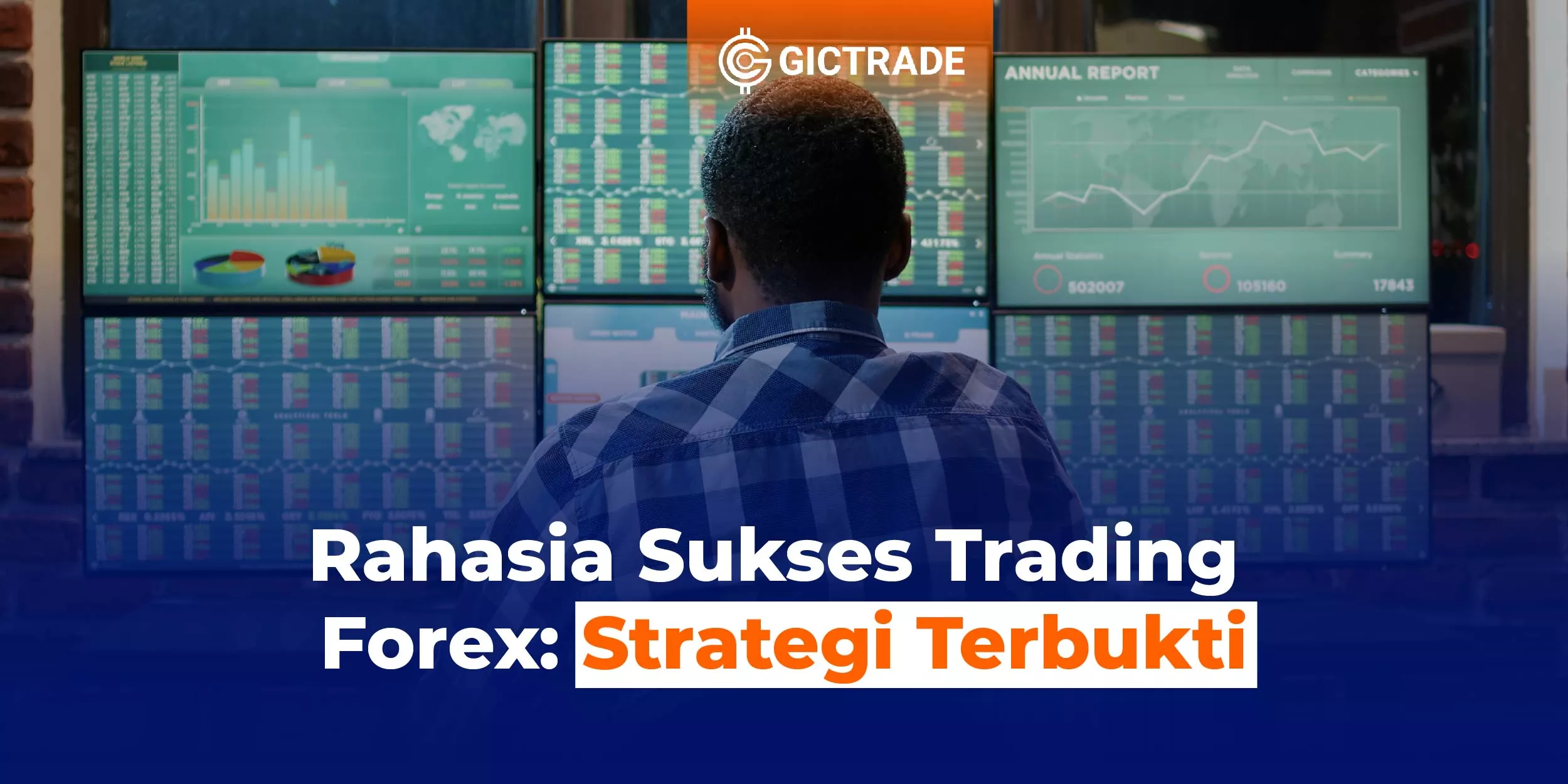The Secrets to Successful Forex Trading - Welcome to the exciting world of forex trading! Are you interested in uncovering the secrets to success in forex trading? This article will discuss proven strategies that can help you achieve profits in the foreign exchange market.
In this article, we will explore various steps and tips that will guide you toward success in forex trading. Let’s get started!

The Secrers to Successful Forex Trading
Understanding Forex Trading
What is Forex Trading?
Forex trading is the activity of trading foreign currencies in the global market. The goal is to buy a currency at a low price and sell it at a higher price, or vice versa, with the hope of making a profit.
Why is Forex Trading Attractive?
Forex trading offers high profit potential and significant liquidity. The forex market is open 24 hours a day, five days a week, providing time flexibility for traders.
Initial Steps Toward Success
Understanding the Forex Market
Before starting to trade, it is essential to understand how the forex market operates. Learn about currency pairs, the factors that influence price movements, and the latest economic news.
Creating a Trading Plan
The next step is to design a clear and structured trading plan. This plan should include your trading goals, the strategies to be used, and the risk management measures to be implemented.
Successful Strategies in Forex Trading
Technical and Fundamental Analysis
Combining technical and fundamental analysis is key in forex trading. Technical analysis involves using charts and indicators to identify price trends, while fundamental analysis looks at economic news and interest rate policies that can affect the market.
Technical Analysis in Forex Trading
Technical analysis is an essential tool in your arsenal as a forex trader. This method helps you understand currency price movements based on historical data, enabling you to make more informed decisions. Let’s delve deeper into what technical analysis means in the context of forex trading.
Charts and Price Patterns
Technical analysis involves observing price charts and identifying specific patterns that emerge from price movements. You can use various types of charts, such as candlestick charts or bar charts, to visualize price movements over time.
From these charts, you can identify patterns such as "double tops" or "head and shoulders," which can provide clues about the direction of future price movements.
Technical Indicators
Technical indicators are additional tools used in technical analysis. Indicators like the RSI (Relative Strength Index), MACD (Moving Average Convergence Divergence), and Bollinger Bands can help measure trend strength, momentum, and market volatility. By combining information from charts and indicators, you can make smarter trading decisions.
Support and Resistance Levels
Support and resistance levels are price levels where prices tend to reverse or correct. Support levels are areas where prices tend to rise after falling, while resistance levels are areas where prices tend to fall after rising. Identifying these levels helps you determine optimal entry and exit points.
Trend Following and Trend Reversal
In technical analysis, there are two main approaches: trend following and trend reversal. Trend-following strategies involve identifying ongoing trends and taking positions in the direction of that trend. Conversely, trend reversal strategies seek signs that the current trend is about to change direction.
Different Timeframes
It’s worth noting that technical analysis can be conducted across various timeframes, such as daily, 4-hour, or 15-minute charts. Each timeframe can provide different information about price movements.
Longer timeframes may give an overview of long-term trends, while shorter timeframes may be more suitable for identifying short-term trading opportunities.
Fundamental Analysis in Forex Trading
Fundamental analysis is an essential approach in forex trading that focuses on economic, political, and policy factors affecting currency values. By understanding fundamental analysis, you can make more informed and potentially more profitable trading decisions. Let’s explore what fundamental analysis entails in the context of forex trading.
Economic News and Indicators
Fundamental analysis involves monitoring economic news and periodically released economic indicators. Economic news such as GDP growth figures, unemployment rates, inflation, and trade balances can provide insights into the economic health of a country. These indicators serve as guides to potential currency movement directions.
Interest Rate Policies
Interest rate policies set by a country's central bank can significantly impact currency values. An increase in interest rates can attract investors to invest in that currency, potentially increasing its value. Conversely, a decrease in interest rates can weaken the currency.
Political and Geopolitical Factors
Political and geopolitical events, such as elections or international conflicts, can influence currency values. Political uncertainty can create volatility in the forex market. Traders need to monitor political developments that may affect the currencies they are trading.
Economic Disparities Between Countries
Fundamental differences between two countries involved in a currency pair can affect exchange rates. For example, countries with strong economic growth tend to have strengthening currencies. Fundamental analysis allows you to understand this comparison and take appropriate actions.
Economic Calendar
Using an economic calendar is a common practice in fundamental analysis. This calendar provides information about the dates and times of economic news releases and important indicators. Traders use this calendar to anticipate market movements that may occur in response to news releases.
The Influence of Market Psychology
Fundamental analysis also includes understanding market psychology. How the market responds to economic news or political events can give insights into how market participants feel about current conditions. Identifying these emotional trends can help you make smarter decisions.
Wise Risk Management
Risk management is a crucial factor in trading. Limit the capital invested in a single position, use stop-loss orders to protect your investments, and avoid investing more than you can afford to lose.
Discipline and Consistency
Discipline is the key to long-term success. Consistently follow your trading plan, avoid emotions that can influence your decisions, and stick to the strategy you have chosen.
Overcoming Obstacles
Learning from Mistakes
Failure is part of the learning process. When facing losses, it’s important to analyze what went wrong and how you can improve in the future.
Staying Informed
The forex market is continually evolving. Keep learning and following the latest news so that you can better anticipate market changes.
Recommended Trading Education Programs
GIC offers services to help beginners understand the trading world comprehensively. This service is called GIC Academy. GIC Academy is a comprehensive education system in Indonesia that includes learning from start to finish, involving professional educators in the futures market. The services provided include:
- Digital education platform through the GICTrade YouTube channel.
- Workshops with professional educators.
- Group education classes via Telegram.
- VIP groups for daily analysis and signals.
Benefits You Can Gain Include:
- Comprehensive solutions for learning forex trading from the basics.
- Diverse educational content.
- Various educator options.
- Class fees starting from zero Rupiah.
GIC Academy Products
Beginner Classes
For individuals just starting as traders, there are options to access trading education through videos on the GIC YouTube channel at no cost. There, you will gain an understanding of basic concepts in the trading world. Additionally, you will have the opportunity to read educational articles aimed at beginner class participants on the GIC website.
Advanced Classes
If you are a trader seeking deeper lessons and want to learn with mentor guidance, you can try the services provided by GIC. These classes are held twice a week through the Zoom Meeting platform. You can register and view the schedule through GIC's official Instagram account. Moreover, supporting reading materials for advanced class traders can also be found on the GIC website.
Professional Classes
This class option is for individuals seeking more intensive learning with mentor support. The approach is more practical, including real trading practice with deposits. If you are interested in registering, you can contact the Admin via the link provided in the Instagram Bio (@GICTrade). Like the beginner and advanced classes, supporting reading materials for professional classes are also available on the GIC website.
Conclusion
By understanding and applying the strategies discussed above, you can increase your chances of success in forex trading. Remember that patience, discipline, and continuously updated knowledge are key to succeeding in this dynamic market.
Frequently Asked Questions (FAQs)
Is forex trading suitable for beginners?
Yes, forex trading is suitable for beginners as long as they have basic knowledge and determination to learn.
How much capital is needed to start forex trading?
The amount of capital depends on your preferences, but it is advised not to invest more than you can afford to lose.
Can i trade forex part-time?
Certainly, the forex market is open 24/5, making it suitable for part-time traders.
Do all trading positions require a stop-loss?
Yes, stop-loss orders are important to protect your capital from uncontrolled losses.
Is How can i deal with uncertainty in forex trading?
Learn market analysis and risk management to reduce uncertainty in trading.
 Last:
Last: 






